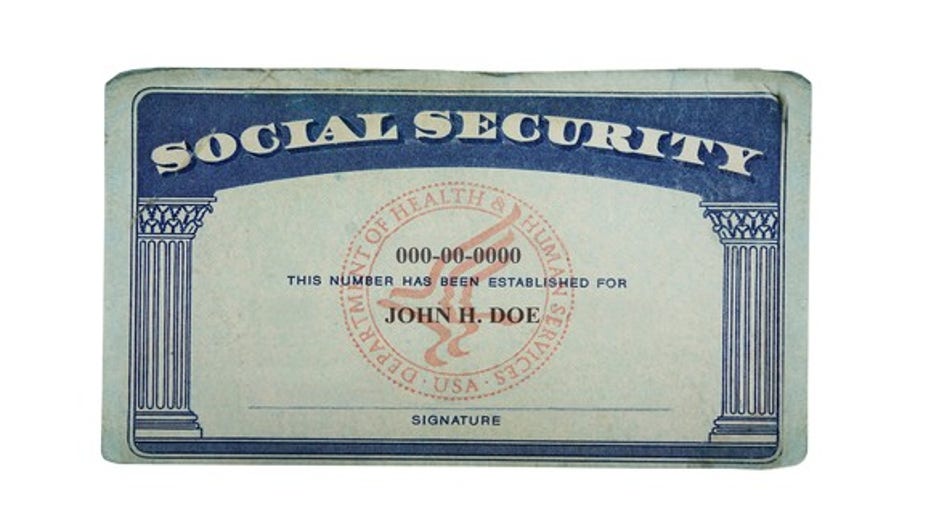12 Jaw-Dropping Stats About Social Security

You probably know that Social Security is a key source of income for most retirees. But here are a number of things you may not have known about the program.
IMAGE SOURCE: GETTY IMAGES.
1. Nearly 61 million Americans receive Social Security benefits. Not all recipients, however, are seniors. Retired workers and their dependents account for 71% of beneficiaries, while disabled workers and their dependents make up 16%. The remaining 13% of benefits are paid to survivors of deceased workers.
2. Last year, Social Security paid out an estimated $918 billion in benefits. As of June 2016, the average monthly benefit among retired workers was $1,348, while the average monthly payment for disabled workers was $1,166.
3. It's only designed to replace about 40% of the average worker's pre-retirement income. Many people are under the mistaken impression that Social Security will sustain them financially in retirement without the need for additional savings, but because most of us still require 70% to 80% of our former income once we stop working, relying on this benefit alone just isn't economically prudent.
4. Social Security is the only source of income for almost 25% of U.S. seniors -- though it really shouldn't be. Furthermore, an estimated 65% of Americans 65 and over count on Social Security to provide the majority of their income in retirement.
5. If you're currently working, only the first $127,200 of your income is subject to Social Security taxes. This means that someone earning $130,000 a year and someone else earning $2 million a year pay the same amount of Social Security tax annually.
6. You can increase your benefits by up to 32% or decrease them by up to 30%. Once you reach your full retirement age, which, for today's older workers, is 66, 67, or somewhere in between, you're eligible to receive your "full" Social Security benefit amount. That said, you're allowed to claim your benefits as early as age 62, but doing so will reduce those payments by 6.67% for the first three years you claim early and then 5% each subsequent year. So if your full retirement age is 67 but you start taking benefits at 62, you'll slash your payments by 30%. On the flipside, you'll get an 8% boost for each year you hold off on benefits until age 70. So if your full retirement age is 66 and you delay your payments until 70, you'll increase your benefits by 32%.
7. In 2017, the maximum monthly Social Security benefit for those who file at their full retirement age is $2,687. Only the former highest earners, however, will receive that much. However, if (as noted above) you have delayed your retirement and are filing at age 70, the maximum monthly check this year is $3,547.
8. Since 2000, Social Security cost-of-living adjustments have increased benefits by 41%. In 1972, Congress enacted a provision calling for automatic annual cost-of-living adjustments (COLAs) for all beneficiaries, the purpose of which is to help retirees incomes keep up with inflation, as measured by the Consumer Price Index. But COLAs have either been stingy or non-existent for the past few of years, and as a result, seniors have lost an estimated 31% of their purchasing power over the past decade and a half.
9. An estimated 77% of workers worry that Social Security won't be around when they retire. The latest Transamerica survey reveals that a majority of today's workers fear the program will completely run out of funds. Thankfully, that's far from being true. According to the Social Security Board of Trustees' latest report, the program's trust fund will likely be depleted by 2034. Once that happens, the program would only be able to pay out about 75% of benefits using its ongoing payroll tax income. But because Social Security will still receive those taxes, it will remain capable of paying recipients the majority of their benefits.
10. Social Security overpaid about $16.8 billion in benefits between October 2003 and February 2014.These errors stemmed from a number of factors, from misreported work activity among beneficiaries to outdated health records among those qualifying for disabilities. Thankfully, the program managed to recover approximately $8.1 billion from the $16.8 billion it overpaid.
11. Social Security has 6.5 million people on record aged112 or older.. The agency is missing a considerable number of death records, leaving itself vulnerable to fraudulent activity and even more erroneous payments.
12. Social Security mistakenly declares 14,000 people dead every year. Of the estimated 2.8 million death reports the Social Security Administration receives each year, about 14,000 are entered incorrectly into its database. Yikes!
While these stats will no doubt shed some light on Social Security, there's a lot more to be learned about how the program works. The more you read up on Social Security, the better prepared you'll be to maximize your benefits when it's your turn to collect them.
The $15,834 Social Security bonus most retirees completely overlook If you're like most Americans, you're a few years (or more) behind on your retirement savings. But a handful of little-known "Social Security secrets" could help ensure a boost in your retirement income. For example: one easy trick could pay you as much as $15,834 more... each year! Once you learn how to maximize your Social Security benefits, we think you could retire confidently with the peace of mind we're all after.Simply click here to discover how to learn more about these strategies.
The Motley Fool has a disclosure policy.



















